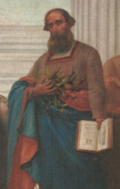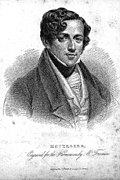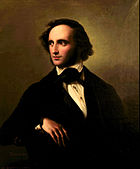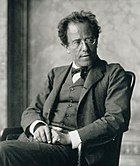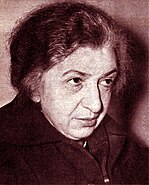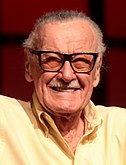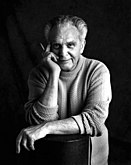Jewish culture
This article includes a list of generalreferences,butit lacks sufficient correspondinginline citations.(May 2023) |

| Part ofa serieson |
| JewsandJudaism |
|---|
| Part ofa serieson |
| Jewish culture |
|---|
 |

Jewish cultureis the culture of theJewish people,[1]from its formation in ancient times until the current age. Judaism itself is not simply a faith-based religion, but anorthopraxandethnoreligion,pertaining to deed, practice, and identity.[2]Jewish culture covers many aspects, including religion and worldviews, literature, media, and cinema,artand architecture, cuisine andtraditional dress,attitudes to gender, marriage, family, social customs and lifestyles, music and dance.[3]Some elements of Jewish culture come from within Judaism, others from the interaction of Jews with host populations, and others still from the inner social and cultural dynamics of the community. Before the 18th century, religion dominated virtually all aspects of Jewish life, and infused culture. Since the advent ofsecularization,whollysecular Jewishculture emerged likewise.
History
[edit]
There has not been a political unity of Jewish society since theunited monarchy.Since thenIsraelitepopulations were always geographically dispersed (seeJewish diaspora), so that by the 19th century, theAshkenazi Jewswere mainly located inEasternand Central Europe; theSephardi Jewswere largely spread among various communities which lived in theMediterranean region;Mizrahi Jewswere primarily spread throughoutWestern Asia;and other populations of Jews lived inCentral Asia,Ethiopia,theCaucasus,andIndia.(SeeJewish ethnic divisions.)
While there has been communication and traffic between these Jewish communities, many Sephardic exiles blended into the Ashkenazi communities which existed in Central Europe following theSpanish Inquisition;many Ashkenazim migrated to theOttoman Empire,giving rise to the characteristic Syrian-Jewish family name "Ashkenazi"; Iraqi-Jewish traders formed a distinctJewish communityin India; to some degree, many of these Jewish populations were cut off from the cultures which surrounded them byghettoization,Muslimlaws ofdhimma,and the traditional discouragement of contact between Jews and members ofpolytheisticpopulations by their religious leaders.
MedievalJewish communities in Eastern Europe continued to display distinct cultural traits over the centuries. Despite the universalist leanings of theEnlightenment(and its echo within Judaism in theHaskalahmovement), manyYiddish-speaking Jews in Eastern Europe continued to see themselves as forming a distinct national group —"'am yehudi",from the Biblical Hebrew – but, adapting this idea to Enlightenment values, they assimilated the concept as that of an ethnic group whose identity did not depend on religion, which under Enlightenment thinking fell under a separate category.
Constantin Măciucăwrites of the existence of "a differentiated but not isolated Jewish spirit" permeating the culture of Yiddish-speaking Jews.[4]This was only intensified as the rise ofRomanticismamplified the sense ofnational identityacross Europe generally. Thus, for example, members of theGeneral Jewish Labour Bundin the late 19th and early 20th centuries were generally non-religious, and one of the historical leaders of the Bund was the child of converts to Christianity, though not a practicing or believing Christian himself.[citation needed]
TheHaskalahcombined with theJewish Emancipationmovement under way in Central and Western Europe to create an opportunity for Jews to enter secular society. At the same time,pogromsin Eastern Europe provoked a surge of migration, in large part to the United States, where some 2 million Jewish immigrants resettled between 1880 and 1920. By 1931, shortly beforeThe Holocaust,92% of the World's Jewish population was Ashkenazi in origin. Secularism originated in Europe as series of movements that militated for a new, heretofore unheard-of concept called "secular Judaism". For these reasons, much of what is thought of by English-speakers and, to a lesser extent, by non-English-speaking Europeans as "secular Jewish culture" is, in essence, the Jewish cultural movement that evolved in Central and Eastern Europe, and subsequently brought to North America by immigrants. During the 1940s, the Holocaust uprooted and destroyed most of the Jewish communities living in much of Europe. This, in combination with thecreation of the State of Israeland the consequentJewish exodus from Arab lands,resulted in a further geographic shift.

Defining secular culture among those who practice traditional Judaism is difficult, because the entire culture is, by definition, entwined with religious traditions: the idea of separate ethnic and religious identity is foreign to the Hebrew tradition of an"'am yisrael".(This is particularly true forOrthodox Judaism.)Gary Tobin,head of theInstitute for Jewish and Community Research,said of traditional Jewish culture:
The dichotomy between religion and culture doesn't really exist. Every religious attribute is filled with culture; every cultural act filled with religiosity. Synagogues themselves are great centers of Jewish culture. After all, what is life really about? Food, relationships, enrichment… So is Jewish life. So many of our traditions inherently contain aspects of culture. Look at thePassover Seder— it's essentially great theater. Jewish education and religiosity bereft of culture is not as interesting.[5]
Yaakov Malkin,Professor of Aesthetics and Rhetoric atTel Aviv Universityand the founder and academic director ofMeitar College for Judaism as Culture[6]in Jerusalem, writes:
Today very many secular Jews take part in Jewish cultural activities, such as celebrating Jewish holidays as historical and nature festivals, imbued with new content and form, or marking life-cycle events such as birth, bar/bat mitzvah, marriage, and mourning in a secular fashion. They come together to study topics pertaining to Jewish culture and its relation to other cultures, inhavurot,cultural associations, and secular synagogues, and they participate in public and political action coordinated by secular Jewish movements, such as the former movement to free Soviet Jews, and movements to combat pogroms, discrimination, and religious coercion. Jewish secularhumanisticeducation inculcates universal moral values through classic Jewish and world literature and through organizations for social change that aspire to ideals of justice and charity.[7]
In North America, the secular and cultural Jewish movements are divided into three umbrella organizations: theSociety for Humanistic Judaism(SHJ), theCongress of Secular Jewish Organizations(CSJO), andWorkmen's Circle.
Philosophy and religion
[edit]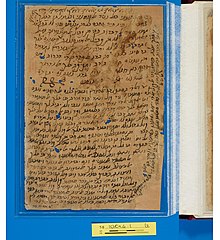
Jewish philosophy includes all philosophy carried out by Jews, or in relation to the religion of Judaism. The Jewish philosophy is extended over several main eras inJewish history,including the ancient and biblical era, medieval era and modern era (seeHaskalah).
The ancient Jewish philosophy is expressed in the bible. According to Prof. Israel Efros the principles of the Jewish philosophy start in the bible, where the foundations of the Jewish monotheistic beliefs can be found, such as the belief inone god,the separation of god and the world and nature (as opposed toPantheism) and thecreation of the world.Other biblical writings that associated with philosophy arePsalmsthat contains invitations to admire the wisdom of God through his works; from this, some scholars suggest, Judaism harbors a Philosophical under-current[8]andEcclesiastesthat is often considered to be the only genuine philosophical work in theHebrew Bible;its author seeks to understand the place of human beings in the world and life's meaning.[9]Other writings related to philosophy can be found in theDeuterocanonical bookssuch asSirachandBook of Wisdom.
During theHellenistic era,Hellenistic Judaismaspired to combine Jewish religious tradition with elements of Greek culture and philosophy. The philosopherPhiloused philosophical allegory to attempt to fuse and harmonizeGreek philosophywith Jewish philosophy. His work attempts to combine Plato and Moses into one philosophical system.[10]He developed an allegoric approach of interpreting holy scriptures (the bible), in contrast to (old-fashioned) literally interpretation approaches. His allegoricalexegesiswas important for several ChristianChurch Fathersand some scholars hold that his concept of theLogosas God's creative principle influenced earlyChristology.Other scholars, however, deny direct influence but say both Philo andEarly Christianityborrow from a common source.[11]

Between theAncient eraand theMiddle Agesmost of the Jewish philosophy concentrated around theRabbinic literaturethat is expressed in theTalmudandMidrash.In the 9th centurySaadia Gaonwrote the textEmunoth ve-Deothwhich is the first systematic presentation and philosophic foundation of thedogmasof Judaism. TheGolden age of Jewish culture in Spainincluded many influential Jewish philosophers such asMoses ibn Ezra,Abraham ibn Ezra,Solomon ibn Gabirol,Yehuda Halevi,Isaac Abravanel,Nahmanides,Joseph Albo,Abraham ibn Daud,Nissim of Gerona,Bahya ibn Paquda,Abraham bar Hiyya,Joseph ibn Tzaddik,Hasdai CrescasandIsaac ben Moses Arama.The most notable isMaimonideswho is considered in the Jewish world to be a prominent philosopher and polymath in the Islamic and Western worlds. Outside of Spain, other philosophers areNatan'el al-Fayyumi,Elia del Medigo,Jedaiah ben Abraham BedersiandGersonides.
Philosophy by Jews inModern erawas expressed by philosophers, mainly in Europe, such asBaruch Spinozafounder ofSpinozism,whose work included modernRationalismandBiblical criticismand laying the groundwork for the 18th-centuryEnlightenment.[12]His work has earned him recognition as one ofWestern philosophy's most important thinkers; Others areIsaac Orobio de Castro,Tzvi Ashkenazi,David Nieto,Isaac Cardoso,Jacob Abendana,Uriel da Costa,Francisco SanchesandMoses Almosnino.A new era began in the 18th century with the thought ofMoses Mendelssohn.Mendelssohn has been described as the "'third Moses,' with whom begins a new era in Judaism," just as new eras began withMosesthe prophet and withMoses Maimonides.[13]Mendelssohn was aGerman Jewishphilosopher to whose ideas the renaissance of European Jews,Haskalah(the Jewish Enlightenment) is indebted. He has been referred to as the father of Reform Judaism, though Reform spokesmen have been "resistant to claim him as their spiritual father".[14]Mendelssohn came to be regarded as a leading cultural figure of his time by bothGermansand Jews. The Jewish Enlightenment philosophy includedMenachem Mendel Lefin,Salomon MaimonandIsaac Satanow.The next19th centurycomprised both secular and religious philosophy and included philosophers such asElijah Benamozegh,Hermann Cohen,Moses Hess,Samson Raphael Hirsch,Samuel Hirsch,Nachman Krochmal,Samuel David Luzzatto,andNachman of Breslovfounder ofBreslov.The 20th century included the notable philosophersJacques Derrida,Karl Popper,Emmanuel Levinas,Claude Lévi-Strauss,Hilary Putnam,Alfred Tarski,Ludwig Wittgenstein,A. J. Ayer,Walter Benjamin,Raymond Aron,Theodor W. Adorno,Isaiah BerlinandHenri Bergson.
| Philo (c. 25 BCE–c. 50 CE)) |
Nahmanides (1194–1270) |
Maimonides (1135/1138–1204) |
Baruch Spinoza (1632–1677) |
Moses Mendelssohn (1729–1786) |
|---|---|---|---|---|
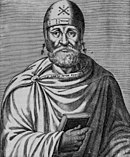 |
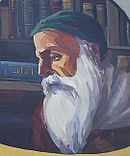 |
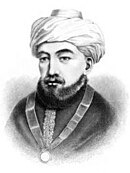 |
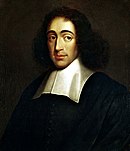 |
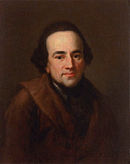 |
| Schneur Zalman of Liadi (1745–1812) |
Emma Goldman (1869–1940) |
Ludwig Wittgenstein (1889–1951) |
Hannah Arendt (1906–1975) |
Menachem Mendel Schneerson (1902–1994) |
 |
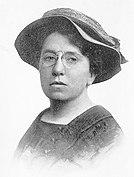 |
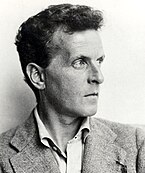
|
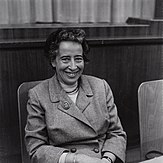 |
 |
Education and politics
[edit]A range of moral and political views is evident early in the history of Judaism, that serves to partially explain the diversity that is apparent among secular Jews who are often influenced by moral beliefs that can be found in Jewish scripture, and traditions. In recent centuries, secular Jews in Europe and the Americas have tended towards thepolitical left[citation needed],and played key roles in the birth of the 19th century'slabor movementandsocialism.The biographies of women likeEmma GoldmanandHannah Arendtembody complicated relationships between politics, Judaism and feminism. While Diaspora Jews have also been represented on the conservative side of the political spectrum, even politically conservative Jews have tended to supportpluralismmore consistently than many other elements of thepolitical right.Some scholars[15]attribute this to the fact that Jews are not expected toproselytize,derived fromHalakha.This lack of a universalizing religion is combined with the fact that most Jews live as minorities in diaspora countries, and that no central Jewish religious authority has existed since363 CE.Jews value education, and the value of education is strongly embedded in Jewish culture.[16][17]
Economic activity
[edit]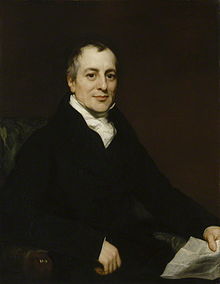
In theMiddle Ages,European laws prevented Jews from owning land and gave them important incentives to go into professions that non-Jewish Europeans were unwilling to undertake.[20]During the medieval period, there was a very strong social stigma against lending money and charging interest among the Christian majority. In most of Europe until the late 18th century, and in some places to an even later date, Jews were prohibited byRoman Catholicgovernments (and others) from owning land. On the other hand, the Church, because of a number of Bible verses (e.g.,Leviticus25:36) forbiddingusury,declared that charging any interest was against the divine law, and this prevented any mercantile use ofcapitalby pious Christians. As theCanon lawdid not apply to Jews, they were not liable to the ecclesiastical punishments which were placed uponusurersby the popes. Christian rulers gradually saw the advantage of having a class of men like the Jews who could supply capital for their use without being liable toexcommunication,and so the money trade of western Europe by this means fell into the hands of the Jews.
However, in almost every instance where large amounts were acquired by Jews through banking transactions the property thus acquired fell either during their life or upon their death into the hands of the king. This happened toAaron of Lincolnin England,Ezmel de Ablitasin Navarre,Heliot de Vesoulin Provence,Benveniste de Portain Aragon, etc. It was often for this reason that kings supported the Jews, and even objected to them becoming Christians (because in that case their fortunes earned by usury could not be seized by the crown after their deaths). Thus, both in England and in France the kings demanded to be compensated by the church for every Jew converted. This type of royal trickery was one factor in creating the stereotypical Jewish role of banker and/or merchant.
As a modern system ofcapitalbegan to develop, loans became necessary for commerce and industry. Jews were able to gain a foothold in the new field of finance by providing these services: as non-Catholics, they were not bound by the ecclesiastical prohibition against "usury"; and in terms of Judaism itself,Hillelhad long ago re-interpreted the Torah's ban on charging interest, allowing interest when it is needed to make a living.[citation needed]
Science and technology
[edit]The strong Jewish tradition of religious scholarship often left Jews well prepared for secular scholarship. In some times and places, this was countered by banning Jews from studying at universities, or admitting them only in limited numbers (seeJewish quota). Over the centuries, Jews have been poorly represented among land-holding classes, but far better represented in academia, professions, finance, commerce and many scientific fields. The strong representation of Jews in science and academia is evidenced by the fact that 193 persons known to be Jews or of Jewish ancestry have been awarded the Nobel Prize, accounting for 22% of all individual recipients worldwide between 1901 and 2014.[21]Of whom, 26% inphysics,[22]22% inchemistry[23]and 27% inPhysiology or Medicine.[24]In the fields of mathematics andcomputer science,31% ofTuring Awardrecipients[25]and 27% ofFields Medalin mathematics[26]were or are Jewish.

The early Jewish activity in science can be found in theHebrew Biblewhere some of the books contain descriptions of thephysical world.Biblical cosmologyprovides sporadic glimpses that may be stitched together to form a Biblical impression of the physical universe. There have been comparisons between the Bible, with passages such as from theGenesis creation narrative,and the astronomy of classical antiquity more generally.[30]The Bible also contains various cleansing rituals. One suggested ritual, for example, deals with the proper procedure for cleansing aleper(Leviticus 14:1–32). It is a fairly elaborate process, which is to be performed after a leper was already healed of leprosy (Leviticus 14:3), involving extensive cleansing and personal hygiene, but also includes sacrificing a bird and lambs with the addition of using their blood to symbolize that the afflicted has been cleansed.
TheTorahproscribesIntercropping(Lev. 19:19, Deut 22:9), a practice often associated with sustainable agriculture and organic farming in modernagricultural science.[31][32]The Mosaic code has provisions concerning the conservation of natural resources, such as trees (Deuteronomy 20:19–20) and birds (Deuteronomy 22:6–7).
During Medieval era astronomy was a primary field among Jewish scholars and was widely studied and practiced.[33]Prominent astronomers includedAbraham Zacutowho published in 1478 hisHebrewbookHa-hibbur ha-gadol[34]where he wrote about theSolar System,charting the positions of the Sun, Moon and five planets.[34]His work served Portugal's exploration journeys and was used byVasco da Gamaand also byChristopher Columbus.Thelunar craterZagutis named after Zacuto's name. The mathematician and astronomerAbraham bar HiyyaHa-Nasi authored the first European book to include the full solution to the quadratic equation x2 – ax + b = 0,[35]and influenced the work ofLeonardo Fibonacci.Bar Hiyya proved by themethod of indivisiblesthe following equation for any circle: S = LxR/2, where S is the surface area, L is the circumference length and R is radius.[36]
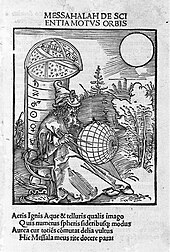
Garcia de Orta,PortugueseRenaissanceJewish physician, was a pioneer ofTropical medicine.He published his workColóquios dos simples e drogas da Indiain 1563,[37]which deals with a series of substances, many of them unknown or the subject of confusion and misinformation in Europe at this period. He was the first European to describe Asiatic tropical diseases, notably cholera; he performed an autopsy on a cholera victim, the first recorded autopsy in India.Bonet de Lattesknown chiefly as the inventor of an astronomical ring-dial by means of which solar and stellar altitudes can be measured and the time determined with great precision by night as well as by day. Other related personalities areAbraham ibn Ezra,whose the Moon craterAbenezranamed after,David Gans,Judah ibn Verga,Mashallah ibn Atharian astronomer, The craterMessalaon the Moon is named after him.
Albert Einsteinwas a German-born theoretical physicist and is considered one of the most prominent scientists in history, often regarded as the "father of modern physics". His revolutionary work on therelativity theorytransformed theoreticalphysicsandastronomyduring the 20th century. When first published, relativity superseded a 200-year-oldtheory of mechanicscreated primarily byIsaac Newton.[38][39][40]In the field of physics, relativity improved the science ofelementary particlesand their fundamental interactions, along with ushering in thenuclear age.With relativity,cosmologyandastrophysicspredicted extraordinaryastronomical phenomenasuch asneutron stars,black holes,andgravitational waves.[38][39][40] Einstein formulated the well-knownMass–energy equivalence,E = mc2,and explained thephotoelectric effect.His work also effected and influenced a large variety of fields of physics including theBig Bangtheory (Einstein'sGeneral relativityinfluencedGeorges Lemaître),Quantum mechanicsandnuclear energy.
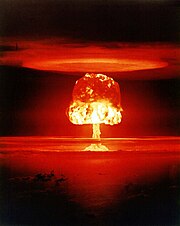
TheManhattan Projectwas a research and development project that produced the firstatomic bombsduringWorld War IIand many Jewish scientists had a significant role in the project.[41]Thetheoretical physicistRobert Oppenheimer,often considered the "father of the atomic bomb", was chosen to direct the Manhattan Project atLos Alamos National Laboratoryin 1942. The physicistLeó Szilárd,that conceived thenuclear chain reaction;Edward Teller,"the father of thehydrogen bomb"andStanislaw Ulam;Eugene Wignercontributed to theory ofAtomic nucleusandElementary particle;Hans Bethewhose work includedStellar nucleosynthesisand was head of the Theoretical Division at the secret Los Alamos laboratory;Richard Feynman,Niels Bohr,Victor WeisskopfandJoseph Rotblat.
The mathematician and physicistAlexander Friedmannpioneered the theory thatuniverse was expandinggoverned by a set of equations he developed now known as theFriedmann equations.Arno Allan Penzias,the physicist andradio astronomerco-discoverer of thecosmic microwave backgroundradiation, which helped establish theBig Bangtheory, the scientistsRobert HermanandRalph Alpherhad also worked on that field. Inquantum mechanicsJewish role was significant as well and many of most influential figures and pioneers of the theory were Jewish:Niels Bohrand his work on theatomstructure,Max Born(Schrödinger equation),Wolfgang Pauli,Richard Feynman(Quantum chromodynamics),Fritz Londonwork onLondon dispersion forceandLondon equations,Walter HeitlerandJulian Schwingerwork onQuantum electrodynamics,Asher Peresa pioneer inQuantum information,David Bohm(Quantum potential).
Sigmund Freud,known as the father ofpsychoanalysis,is one of the most influential scientists of the 20th century. In creating psychoanalysis, a clinical method for treatingpsychopathologythrough dialogue between a patient and a psychoanalyst,[42]Freud developed therapeutic techniques such as the use offree associationand discoveredtransference,establishing its central role in the analytic process. Freud's redefinition of sexuality to include its infantile forms led him to formulate theOedipus complexas the central tenet of psychoanalytical theory. His analysis ofdreamsas wish-fulfillments provided him with models for the clinical analysis of symptom formation and the mechanisms ofrepressionas well as for elaboration of his theory of theunconsciousas an agency disruptive of conscious states of mind.[43]Freud postulated the existence oflibido,an energy with which mental processes and structures are invested and which generates erotic attachments, and adeath drive,the source of repetition, hate, aggression andneuroticguilt.[44]

John von Neumann,a mathematician and physicist, made major contributions to a number of fields,[47]includingfoundations of mathematics,functional analysis,ergodic theory,geometry,topology,numerical analysis,quantum mechanics,hydrodynamicsandgame theory.[48]In made also a major work withcomputingand the development of the computer, he suggested and described acomputer architecturecalledVon Neumann architectureand worked onlinear programming,self-replicating machines,stochastic computing), and statistics.Emmy Noetherwas an influential mathematician known for her groundbreaking contributions toabstract algebraandtheoretical physics.Described by many prominent scientists as the most important woman in the history of mathematics,[49][50][incomplete short citation]she revolutionized the theories ofrings,fields,andalgebras.In physics,Noether's theoremexplains the fundamental connection betweensymmetryandconservation laws.[51]
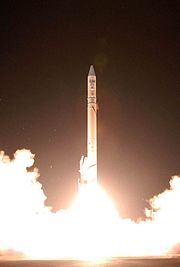
More remarkable contributors includeHeinrich HertzandSteven WeinberginElectromagnetism;Carl Sagan,his contributions were central to the discovery of the high surface temperatures ofVenusand known for his contributions to the scientific research ofextraterrestrial life;Felix Hausdorff(founder oftopology);Edward Witten(M-theory);Vitaly GinzburgandLev Landau(Ginzburg–Landau theory);Yakir Aharonov(Aharonov–Bohm effect);Boris PodolskyandNathan Rosen(EPR paradox);Moshe Carmeli(Gauge theory).Rudolf Lipschitz(Lipschitz continuity);Paul Cohen(Continuum hypothesis,Axiom of choice);Laurent Schwartz(theory of distribution);Grigory Margulis(Lie group);Richard M. Karp(Theory of computation);Adi Shamir(RSA,cryptography);Judea Pearl(Artificial intelligence,Bayesian network);Max Newman(Colossus computer);Carl Gustav Jacob Jacobi(Jacobi elliptic functions,Jacobian matrix and determinant,Jacobi symbol).Sidney Altman(Molecular biology,RNA);Melvin Calvin(Calvin Cycle);Otto Wallach(Alicyclic compound);Paul Berg(biochemistry ofnucleic acids);Ada Yonath(Crystallography,structure of theribosome);Dan Shechtman(Quasicrystal);Julius AxelrodandBernard Katz(Neurotransmitter);Elie Metchnikoff(discovery ofMacrophage);Selman Waksman(discovery ofStreptomycin);Rosalind Franklin(DNA);Carl Djerassi(the pill);Stephen Jay Gould(Evolutionary biology);Baruch Samuel Blumberg(Hepatitis Bvirus);Jonas SalkandAlbert Sabin(developers of thePolio vaccines);Paul Ehrlich(discovery of theBlood–brain barrier); In fields such aspsychologyandneurology:Otto Rank,Viktor Frankl,Stanley MilgramandSolomon Asch;linguistics:Noam Chomsky,Franz Boas,Roman Jakobson,Edward Sapir,Joseph Greenberg;and sociology:Theodor Adorno,Nathan Glazer,Erving Goffman,Georg Simmel.
Beside Scientific discoveries and researches, Jews have created significant and influential innovations in a large variety of fields such as the listed samples: Siegfried Marcus- automobile pioneer, inventor of the first petroleum-powered car (56 years after thefirst internal combustion car);Emile Berliner- developer of thedisc recordphonograph;Mikhail Gurevich- co-inventor of theMIG aircraft;Theodore Maiman- inventor of thelaser;Robert Adler- inventor of thewireless remote controlfor televisions;Edwin H. Land– inventor ofLand Camera;Bob Kahn- inventor ofTCPandIP;Bram Cohen- creator ofBittorent;Sergei BrinandLarry Page- creators of Google;Laszlo Biro–Ballpoint pen;Simcha Blass-Drip irrigation;Lee Felsenstein– designer ofOsborne 1;Zeev SuraskiandAndi Gutmansco-creators ofPHPand founders ofZend Technologies;Ralph H. Baer,"The Father of Video Games".
| Garcia de Orta (1501/2–1568) |
Sigmund Freud (1856–1939) |
Albert Einstein (1879–1955) |
Emmy Noether (1882–1935) |
|---|---|---|---|
 |
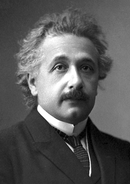 |
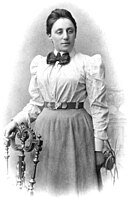 | |
| Niels Bohr (1885–1962) |
John von Neumann (1903–1957) |
Robert Oppenheimer (1904–1967) |
Richard Feynman (1918–1988) |
 |
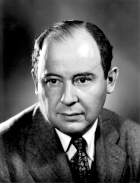 |
 |
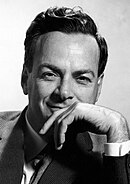 |
Literature and poetry
[edit]In some places where there have been relatively high concentrations of Jews, distinct secular Jewish subcultures have arisen.[52]For example, ethnic Jews formed an enormous proportion of the literary and artistic life ofVienna,Austria at the end of the 19th century, or of New York City 50 years later (and Los Angeles in the mid-late 20th century). Many of these creative Jews were not particularly religious people. In general, Jewish artistic culture in various periods reflected the culture in which they lived.
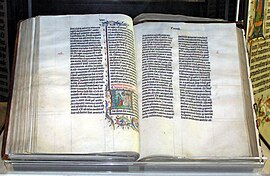
Literary and theatrical expressions of secular Jewish culture may be in specifically Jewish languages such asHebrew,Yiddish,Judeo-TatorLadino,or it may be in the language of the surrounding cultures, such as English or German. Secular literature and theater in Yiddish largely began in the 19th century and was in decline by the middle of the 20th century. The revival of Hebrew beyond its use in the liturgy is largely an early 20th-century phenomenon, and is closely associated withZionism.Apart from the use of Hebrew in Israel, whether a Jewish community will speak a Jewish or non-Jewish language as its main vehicle ofdiscourseis generally dependent on how isolated or assimilated that community is. For example, the Jews in theshtetlsof Poland and theLower East Sideof New York City during the early 20th century spokeYiddishat most times, while assimilated Jews in 19th and early 20th-century Germany spoke German, and American-born Jews in the United States speak English.
Jewish authors have both created a uniqueJewish literatureand contributed to the national literature of many of the countries in which they live. Though not strictly secular, the Yiddish works of authors likeSholem Aleichem(whose collected works amounted to 28 volumes) andIsaac Bashevis Singer(winner of the 1978 Nobel Prize), form their own canon, focusing on the Jewish experience in both Eastern Europe, and in America. In the United States, Jewish writers likePhilip Roth,Saul Bellow,and many others are considered among the greatest American authors, and incorporate a distinctly secular Jewish view into many of their works. The poetry ofAllen Ginsbergoften touches on Jewish themes (notably the early autobiographical works such asHowlandKaddish). Other famous Jewish authors that made contributions to world literature includeHeinrich Heine,German poet,Mordecai Richler,Canadian author,Isaac Babel,Russian author,Franz Kafka,of Prague, andHarry Mulisch,whose novelThe Discovery of Heavenwas revealed by a 2007 poll as the "Best Dutch Book Ever".[54]

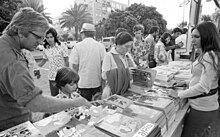
InModern Judaism: An Oxford Guide,Yaakov Malkin,Professor of Aesthetics and Rhetoric atTel Aviv Universityand the founder and academic director of Meitar College for Judaism as Culture in Jerusalem, writes: "Secular Jewish culture embraces literary works that have stood the test of time as sources of aesthetic pleasure and ideas shared by Jews and non-Jews, works that live on beyond the immediate socio-cultural context within which they were created. They include the writings of such Jewish authors asSholem Aleichem,Itzik Manger,Isaac Bashevis Singer,Philip Roth,Saul Bellow,S.Y. Agnon,Isaac Babel,Martin Buber,Isaiah Berlin,Haim Nahman Bialik,Yehuda Amichai,Amos Oz,A.B. Yehoshua,andDavid Grossman.It boasts masterpieces that have had a considerable influence on all of western culture, Jewish culture included – works such as those ofHeinrich Heine,Gustav Mahler,Leonard Bernstein,Marc Chagall,Jacob Epstein,Ben Shahn,Amedeo Modigliani,Franz Kafka,Max Reinhardt (Goldman),Ernst Lubitsch,andWoody Allen."[7]
Other notable contributors areIsaac Asimovauthor of theFoundation seriesand others such asI, robot,NightfallandThe Gods Themselves;Joseph Heller(Catch-22);R.L. Stine(Goosebumpsseries);J. D. Salinger(The Catcher in the Rye);Michael Chabon(The Amazing Adventures of Kavalier & Clay,The Yiddish Policemen's Union);Marcel Proust(In Search of Lost Time);Arthur Miller(Death of a SalesmanandThe Crucible);Will Eisner(A Contract with God);Shel Silverstein(The Giving Tree);Arthur Koestler(Darkness at Noon,The Thirteenth Tribe);Saul Bellow(Herzog); The historical novel seriesThe Accursed KingsbyMaurice Druonis an inspiration forGeorge R. R. Martin'sA Song of Ice and Firenovels.[55][56][57]
Among recipient ofNobel Prize in Literature,13% were or are Jewish.[58]
Another aspect of Jewish literature is the ethical, calledMusar literature.This literature has been composed by both religious and secular authors.[59]
Hebrew poetryis expressed by various of poets in different eras of Jewish history.Biblical poetryis related to the poetry in biblical times as it expressed in theHebrew Bibleand Jewish sacred texts. In medieval times the Jewish poetry was mainly expressed bypiyyutimand several poets such asYehuda Halevi,Samuel ibn Naghrillah,Solomon ibn Gabirol,Moses ibn Ezra,Abraham ibn EzraandDunash ben Labrat.Modern Hebrew poetryis mostly related to the era of and after therevival of the Hebrew language,pioneered byMoshe Chaim Luzzattoin theHaskalahera and succeeded by poets such asHayim Nahman Bialik,Nathan AltermanandShaul Tchernichovsky.
| Yehuda Halevi (c. 1075–1141) |
Heinrich Heine (1797–1856) |
Sholem Aleichem (1859–1916) |
Franz Kafka (1883–1924) |
Boris Pasternak (1890–1960) |
Ayn Rand (1905–1982) |
Isaac Asimov (1920–1992) |
Allen Ginsberg (1926–1997) |
|---|---|---|---|---|---|---|---|
 |
 |
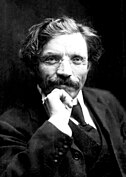 |
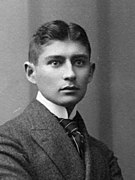 |
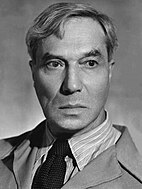 |
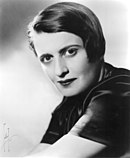
|
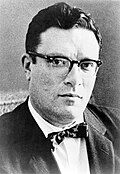
|
 |
Theatre
[edit]Yiddish theatre
[edit]
TheUkrainianJewAbraham Goldfadenfounded the first professionalYiddish-languagetheatre troupe inIași,Romaniain 1876. The next year, his troupe achieved enormous success in Bucharest.Within a decade, Goldfaden and others brought Yiddish theater to Ukraine, Russia, Poland, Germany, New York City, and other cities with significantAshkenazicpopulations. Between 1890 and 1940, over a dozen Yiddish theatre groups existed in New York City alone, in theYiddish Theater District,performing original plays, musicals, and Yiddish translations of theatrical works and opera. Perhaps the most famous of Yiddish-language plays isThe Dybbuk(1919) byS. Ansky.
Yiddish theater in New York in the early 20th century rivalled English-language theater in quantity and often surpassed it in quality. A 1925New York Timesarticle remarks, "…Yiddish theater… is now a stable American institution and no longer dependent on immigration from Eastern Europe. People who can neither speak nor write Yiddish attend Yiddish stage performances and payBroadwayprices onSecond Avenue."This article also mentions other aspects of a New York Jewish cultural life" in full flower "at that time, among them the fact that the extensive New York Yiddish-language press of the time included seven daily newspapers.[60]
In fact, however, the next generation of American Jews spoke mainly English to the exclusion of Yiddish; they brought the artistic energy of Yiddish theater into the American theatrical mainstream, but usually in a less specifically Jewish form.
Yiddish theater, most notablyMoscow State Jewish Theaterdirected bySolomon Mikhoels,also played a prominent role in the arts scene of the Soviet Union until Stalin's 1948 reversal in government policy toward the Jews. (SeeRootless cosmopolitan,Night of the Murdered Poets.)
Montreal'sDora Wasserman Yiddish Theatrecontinues to thrive after 50 years of performance.
European theatre
[edit]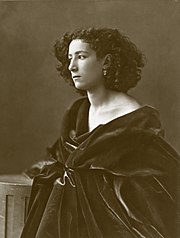
From theirEmancipationto World War II, Jews were very active and sometimes even dominant in certain forms of European theatre, and after theHolocaustmany Jews continued to that cultural form. For example, in pre-Nazi Germany, whereNietzscheasked "What good actor of today is not Jewish?", acting, directing and writing positions were often filled by Jews. Both MacDonald and Jewish Tribal Review would generally be counted as antisemitic sources, but reasonably careful in their factual claims. "In Imperial Berlin, Jewish artists could be found in the forefront of the performing arts, from high drama to more popular forms likecabaretandrevue,and eventually film. Jewish audiences patronized innovative theater, regardless of whether they approved of what they saw. "[61]The British historianPaul Johnson,commenting on Jewish contributions to European culture at theFin de siècle,writes that
The area where Jewish influence was strongest was the theatre, especially in Berlin. Playwrights likeCarl Sternheim,Arthur Schnitzler,Ernst Toller,Erwin Piscator,Walter Hasenclever,Ferenc MolnárandCarl Zuckmayer,and influential producers likeMax Reinhardt,appeared at times to dominate the stage, which tended to be modishly left-wing,pro-republican,experimental and sexually daring. But it was certainly not revolutionary, and it was cosmopolitan rather than Jewish.[62]
Jews also made similar, if not as massive, contributions to theatre and drama in Austria, Britain, France, and Russia (in the national languages of those countries). Jews in Vienna, Paris and German cities foundcabaretboth a popular and effective means of expression, as German cabaret in theWeimar Republic"was mostly a Jewish art form".[63]The involvement of Jews in Central European theatre was halted during the rise of the Nazis and the purging of Jews from cultural posts, though many emigrated to Western Europe or the United States and continued working there.
English-language theatre
[edit]
In the early 20th century the traditions of New York's vibrant Yiddish Theatre District both rivaled and fed into Broadway. In the English-speaking theatre Jewish émigrés brought novel theatrical ideas from Europe, such as thetheatrical realistmovement and thephilosophyofKonstantin Stanislavski,whose teachings would influence many Jewish American acting teachers such as the Yiddish theatre-trained acting theoristStella Adler.Jewish immigrants were instrumental in the creation and development of the genre of musical theatre and earlier forms of theatrical entertainment in America, and would innovate the new, distinctly American, art form, the Broadway musical.[64] Brandeis UniversityProfessorStephen J. Whitfieldhas commented that "More so than behind the screen, the talent behind the stage was for over half a century virtually the monopoly of one ethnic group. That is... [a] feature which locates Broadway at the center of Jewish culture".[65]New York UniversityProfessorLaurence Maslonsays that "There would be no American musical without Jews… Their influence is corollary to the influence of black musicians on jazz; there were as many Jews involved in the form".[66]Other writers, such as Jerome Caryn, have noted that musical theatre and other forms of American entertainment are uniquely indebted to the contributions of Jewish Americans, since "there might not have been a modern Broadway without the" Asiatic horde "ofcomedians,gossip columnists,songwriters,and singers that grew out of theghetto,whether it was on theLower East Side,Harlem(a Jewish ghetto before it was a black one),Newark,or Washington, D.C. "[67]Likewise, in the analysis of Aaron Kula, director of The Klezmer Company,
…the Jewish experience has always been best expressed by music, and Broadway has always been an integral part of the Jewish American experience… The difference is that one can expand the definition of "Jewish Broadway" to include an interdisciplinary roadway with a wide range of artistic activities packed onto one avenue—theatre, opera, symphony, ballet, publishing companies, choirs, synagogues and more. This vibrant landscape reflects the life, times and creative output of the Jewish American artist.[68]
In the 19th and early 20th centuries the Europeanoperetta,a precursor the musical, often featured the work of Jewish composers such asPaul Abraham,Leo Ascher,Edmund Eysler,Leo Fall,Bruno Granichstaedten,Jacques Offenbach,Emmerich Kalman,Sigmund Romberg,Oscar StrausandRudolf Friml;the latter four eventually moved to the United States and produced their works on the New York stage. One of thelibrettistsforBizet'sCarmen(not an operetta proper but rather a work of the earlierOpéra comiqueform) was the JewishLudovic Halévy,niece of composerFromental Halévy(Bizet himself was not Jewish but he married the elder Halevy's daughter, many have suspected that he was the descendant of Jewish converts to Christianity, and others have noticed Jewish-sounding intervals in his music).[69]The Viennese librettist Victor Leon summarized the connection of Jewish composers and writers with the form of operetta: "The audience for operetta wants to laugh beneath tears—and that is exactly what Jews have been doing for the last two thousand years since the destruction of Jerusalem".[70]Another factor in the evolution of musical theatre wasvaudeville,and during the early 20th century the form was explored and expanded by Jewish comedians and actors such asJack Benny,Fanny Brice,Eddie Cantor,The Marx Brothers,Anna Held,Al Jolson,Molly Picon,Sophie TuckerandEd Wynn.During the period when Broadway was monopolized byrevuesand similar entertainments, Jewish producerFlorenz Ziegfelddominated the theatrical scene with hisFollies.
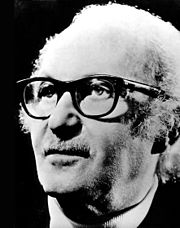
By 1910 Jews (the vast majority of them immigrants from Eastern Europe) already composed a quarter of the population of New York City, and almost immediately Jewish artists and intellectuals began to show their influence on the cultural life of that city, and through time, the country as a whole. Likewise, while the modern musical can best be described as a fusion of operetta, earlier American entertainment and African-American culture and music, as well as Jewish culture and music, the actual authors of the first "book musicals" were the JewishJerome Kern,Oscar Hammerstein II,GeorgeandIra Gershwin,George S. KaufmanandMorrie Ryskind.From that time until the 1980s a vast majority of successful musical theatre composers, lyricists, and book-writers were Jewish (a notable exception is the ProtestantCole Porter,who acknowledged that the reason he was so successful on Broadway was that he wrote what he called "Jewish music" ).[71]Rodgers and Hammerstein,Frank Loesser,Lerner and Loewe,Stephen Sondheim,Leonard Bernstein,Stephen Schwartz,Kander and Ebband dozens of others during the"Golden Age"of musical theatre were Jewish. Since theTony Award for Best Original Scorewas instituted in 1947, approximately 70% of nominated scores and 60% of winning scores were by Jewish composers. Of successful British and French musical writers both in theWest Endand Broadway,Claude-Michel SchönbergandLionel Bartare Jewish, among others.
One explanation of the affinity of Jewish composers and playwrights to the musical is that "traditionalJewish religious musicwas most often led by a single singer, acantorwhile Christians emphasize choral singing. "[72] Many of these writers used the musical to explore issues relating toassimilation,the acceptance of the outsider in society, the racial situation in the United States, the overcoming of obstacles through perseverance, and other topics pertinent to Jewish Americans and Western Jews in general, often using subtle and disguised stories to get this point across.[73]For example, Kern, Rodgers, Hammerstein, the Gershwins,Harold ArlenandYip Harburgwrote musicals and operas aiming to normalize societal toleration of minorities and urging racial harmony; these works includedShow Boat,Porgy and Bess,Finian's Rainbow,South PacificandThe King and I.Towards the end of Golden Age, writers also began to openly and overtly tackle Jewish subjects and issues, such asFiddler on the RoofandRags;Bart'sBlitz!also tackles relations between Jews and Gentiles.Jason Robert BrownandAlfred Uhry'sParadeis a sensitive exploration of bothantisemitismand historical American racism. The original concept that becameWest Side Storywas set in theLower East Sideduring Easter-Passover celebrations; the rival gangs were to be Jewish andItalianCatholic.[74]
The ranks of prominent Jewish producers, directors, designers and performers includeBoris Aronson,David Belasco,Joel Grey,the Minskoff family,Zero Mostel,Joseph Papp,Mandy Patinkin,the Nederlander family,Harold Prince,Max Reinhardt,Jerome Robbins,theShubert familyandJulie Taymor.Jewish playwrights have also contributed to non-musical drama and theatre, both Broadway and regional.Edna Ferber,Moss Hart,Lillian Hellman,Arthur MillerandNeil Simonare only some of the prominent Jewish playwrights in American theatrical history. Approximately 34% of the plays and musicals that have won thePulitzer Prize for Dramawere written and composed by Jewish Americans.[75]
TheAssociation for Jewish Theateris a contemporary organization that includes both American and international theaters that focus on theater with Jewish content. It has also expanded to include Jewish playwrights.
Hebrew and Israeli theatre
[edit]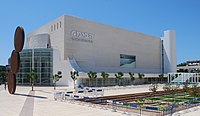
The earliest knownHebrew languagedrama was written around 1550 by aJewish-Italianwriter fromMantua.[76]A few works were written byrabbisandKabbalistsin 17th-centuryAmsterdam,where Jews were relatively free from persecution and had both flourishing religious and secular Jewish cultures.[77]All of these early Hebrew plays were about Biblical or mystical subjects, often in the form ofTalmudicparables.During the post-Emancipation period in 19th-century Europe, many Jews translated greatEuropean playssuch as those byShakespeare,MolièreandSchiller,giving the characters Jewish names and transplanting the plot and setting to within a Jewish context.
Modern Hebrew theatre and drama, however, began with the development ofModern Hebrewin Europe (the first Hebrew theatricalprofessional performancewas in Moscow in 1918)[78]and was "closely linked with the Jewish national renaissance movement of the twentieth century. The historical awareness and the sense of primacy which accompanied the Hebrew theatre in its early years dictated the course of its artistic and aesthetic development".[79]These traditions were soon transplanted toIsrael.Playwrights such asNatan Alterman,Hayyim Nahman Bialik,Leah Goldberg,Ephraim Kishon,Hanoch Levin,Aharon Megged,Moshe Shamir,Avraham Shlonsky,Yehoshua SobolandA. B. Yehoshuahave written Hebrew-language plays. Themes that are obviously common in these works are theHolocaust,theArab–Israeli conflict,the meaning of Jewishness, and contemporary secular-religious tensions within Jewish Israel. The most well-known Hebrew theatre company and Israel's national theatre is theHabima(meaning "the stage" in Hebrew), which was formed in 1913 inLithuania,and re-established in 1917 in Russia; another prominent Israeli theatre company is theCameri Theatre,which is "Israel's first and leading repertory theatre".[80]
Judeo-Tat theatre
[edit]
The first theatrical event byMountain Jewstook place in December 1903,[81]when Asaf Agarunov, a teacher and aZionist,staged a story by Naum Shoykovich, translated fromHebrew,"The Burn for Burn," and staged it in honor of schoolteacher Nagdimuna ben Simona's (Shimunov) wedding.[81]
In 1918, a drama studio was opened inDerbent,Soviet Unionheaded byRabbiYashaiyo Rabinovich.[81]
In 1935, the first Soviet Union theatre opened in Derbent, which included three troupes –Russian,Mountain Jews andTurk.It was based on drama circles, which were led by Manashir and Khanum Shalumov. Initially, in the circle, men played the female roles. Later, women began to take part in the theatre.[82]In 1939, the Judeo-Tat theatre was the winner of the festival of theatres inDagestan.
DuringWorld War II,most of the actors were drafted into the army. Many theatre actors died in the war.[83]In 1943, the theatre resumed its work, and in 1948 it was closed. The official reason was its unprofitability.[83]
In the 1960s, the theatre resumed its activities and experienced its second heyday. The actress, Akhso Ilyaguevna Shalumova (1909-1985), "Honored Artist of theDagestan ASSR"returned to the theatre. She played the role of(Juhuri:Шими Дербенди)- Shimi Derbendi's wife -Shahnugor,based on the stories of writerHizgil Avshalumov.[83]
In the 1970s, the People's Judeo-Tat theatre was organized. For many years, its director wasAbram Avdalimov,"Honored Cultural Worker of theDagestan ASSR,"singer, actor and playwright. His successor wasRoman Izyaev,who was awarded theOrder of the Badge of Honourfor his meritorious service.[83]
In the 1990s, theJudeo-Tat theatreexperienced another crisis: it rarely held performances and did not have any premieres. Only in 2000, when it became a municipal theater, was it able to resume its activity. From 2000 to 2002, the theatre was headed by actor and musician Raziil Semenovich Ilyaguev (1945-2016), "Honored Worker of Culture of the Republic of Dagestan." For the next two years the theatre was headed by Alesya Isakova.
In 2004, Lev Yakovlevich Manakhimov (1950-2021), "Honored Artist of the Republic of Dagestan," became the artistic director of the theatre. After the death of Manakhimov, Boris Yudaev became the head of the theatre.
Cinema
[edit]In the era when Yiddish theatre was still a major force in the world of theatre, over 100 films were made in Yiddish. Many are now lost. Prominent films includedShulamith(1931), the first Yiddish musical on filmHis Wife's Lover(1931),A Daughter of Her People(1932), the anti-Nazi filmThe Wandering Jew(1933),TheYiddish King Lear(1934),Shir Hashirim(1935), the biggest Yiddish film hit of all timeYidl Mitn Fidl(1936),Where Is My Child?(1937),Green Fields(1937),Dybuk(1937),The Singing Blacksmith(1938),Tevya(1939),Mirele Efros(1939),Lang ist der Weg(1948), andGod, Man and Devil(1950).
The roster of Jewish entrepreneurs in the English-language American film industry is legendary:Samuel Goldwyn,Louis B. Mayer,the Warner Brothers,David O. Selznick,Marcus Loew,andAdolph Zukor,Foxto name just a few, and continuing into recent times with such industry giants as super-agentMichael Ovitz,Michael Eisner,Lew Wasserman,Jeffrey Katzenberg,Steven Spielberg,andDavid Geffen.However, few of these brought a specifically Jewish sensibility either to the art of film or, with the sometime exception of Spielberg, to their choice of subject matter. The historianEric Hobsbawmdescribed the situation as follows:[84]
It would be... pointless to look for consciously Jewish elements in the songs of Irving Berlin or the Hollywood movies of the era of the great studios, all of which were run by immigrant Jews: their object, in which they succeeded, was precisely to make songs or films which found a specific expression for 100 per cent Americanness.
A more specifically Jewish sensibility can be seen in the films of theMarx Brothers,Mel Brooks,orWoody Allen;other examples of specifically Jewish films from the Hollywood film industry are theBarbra StreisandvehicleYentl(1983), orJohn Frankenheimer'sThe Fixer(1968). More recently,Call Me By Your Name(2017) can be given as an example of a movie with Jewish sensibility. Jewish film festivals are nowadays conducted in many major cities around the world as vehicles of introducing such films to wider audiences, including among others theBoston JFF,San Francisco JFF,Jerusalem JFF, etc
Radio and television
[edit]The first radio chains, theRadio Corporation of Americaand theColumbia Broadcasting System,were created by theJewish AmericanDavid SarnoffandWilliam S. Paley,respectively. These Jewish innovators were also among the first producers of televisions, both black-and-white andcolor.[85]Among the Jewish immigrant communities of America there was also a thrivingYiddish languageradio, with its "golden age" from the 1930s to the 1950s.
Although there is little specifically Jewish television in the United States (National Jewish Television,largely religious, broadcasts only three hours a week), Jews have been involved in American television from its earliest days. FromSid CaesarandMilton BerletoJoan Rivers,Gilda Radner,andAndy KaufmantoBilly CrystaltoJerry Seinfeld,Jewish stand-up comedians have been icons of American television. Other Jews that held a prominent role in early radio and television wereEddie Cantor,Al Jolson,Jack Benny,Walter WinchellandDavid Susskind.More figures areLarry King,Michael SavageandHoward Stern.In the analysis of Paul Johnson, "The Broadway musical, radio and TV were all examples of a fundamental principle inJewish diasporahistory: Jews opening up a completely new field in business and culture, atabula rasaon which to set their mark, before other interests had a chance to take possession, erectguildor professional fortifications and deny them entry. "[86]
One of the first televisedsituation comedies,The Goldbergswas set in a specifically Jewish milieu inthe Bronx.While the overt Jewish milieu ofThe Goldbergswas unusual for an American television series, there were a few other examples, such asBrooklyn Bridge(1991–1993) andBridget Loves Bernie.Jews have also played an enormous role among the creators and writers of television comedies:Woody Allen,Mel Brooks,Selma Diamond,Larry Gelbart,Carl Reiner,andNeil Simonall wrote for Sid Caesar; Reiner's sonRob Reinerworked withNorman LearonAll in the Family(which often engagedantisemitismand other issues ofprejudice);Larry DavidandJerry Seinfeldcreated the hit sitcomSeinfeld,Lorne Michaels,Al Franken,,Rosie Shuster,andAlan ZweibelofSaturday Night Livebreathed new life into the variety show in the 1970s.
More recently, American Jews have been instrumental to "novelistic" television series such asThe WireandThe Sopranos.Variously acclaimed as one of the greatest television series of all time,The Wirewas created byDavid Simon.Simon also served as executive producer, head writer, andshow runner.Matthew Weinerproduced the fifth and sixth seasons ofThe Sopranosand later createdMad Men. More remarkable contributors areDavid BenioffandD. B. Weiss,creators ofGame of ThronesTV series;Ron Leavittco-creator ofMarried... with Children;Damon LindelofandJ. J. Abrams,co-creators ofLost;David CraneandMarta Kauffman,creators ofFriends;Tim Kringcreator ofHeroes;Sydney Newmanco-creator ofDoctor Who;Darren Star,creatorSex and the CityandMelrose Place;Aaron Spelling,co-creator ofBeverly Hills, 90210;Chuck Lorre,co-creator ofThe Big Bang TheoryandTwo and a Half Men;Gideon Raff,creator ofPrisoners of WarwhichHomelandis based on;Aaron RubenandSheldon Leonardco-creators ofThe Andy Griffith Show;Don Hewittcreator of60 Minutes;Garry Shandling,co-creator ofThe Larry Sanders Show;Ed. Weinberger,co-creator ofThe Cosby Show;David Milch,creator ofDeadwood;Steven Levitan,co-creator ofModern Family;Dick Wolf,creator ofLaw & Order;David Shore,creatorHouse;Max MutchnickandDavid Kohancreators ofWill & Grace;Adam HorowitzandEdward Kitsiscreators ofOnce Upon a Time (TV Series).There is also a significant role of Jews in acting by actors such asSarah Jessica Parker,William Shatner,Leonard Nimoy,Mila Kunis,Zac Efron,Hank Azaria,David Duchovny,Fred Savage,Zach Braff,Noah Wyle,Adam Brody,Katey Sagal,Sarah Michelle Gellar,Alyson Hannigan,Michelle Trachtenberg,David Schwimmer,Lisa KudrowandMayim Bialik.
Music
[edit]Jewish musical contributions also tend to reflect the cultures of the countries in which Jews live, the most notable examples beingclassicalandpopular musicin the United States and Europe. Some music, however, is unique to particular Jewish communities, such asIsraeli music,Israeli folkmusic,Klezmer,Sephardic and Ladino music,andMizrahi music.
Classical music
[edit]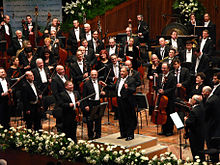
BeforeEmancipation,virtually all Jewish music in Europe wassacred music,with the exception of the performances ofklezmorimduring weddings and other occasions. The result was a lack of a Jewish presence inEuropean classical musicuntil the 19th century, with a very few exceptions, normally enabled by specific aristocratic protection, such asSalamone RossiandClaude Daquin(the work of the former is considered the beginning of "Jewish art music" ).[87]After Jews were admitted to mainstream society in England (gradually after their return in the 17th century),France,Austria-Hungary,theGerman Empire,andRussia(in that order), the Jewish contribution to the European music scene steadily increased, but in the form of mainstream European music, not specifically Jewish music. Notable examples of Jewish Romantic composers (by country) areCharles-Valentin Alkan,Paul DukasandFromental Halevyfrom France,Josef Dessauer,Karl GoldmarkandGustav Mahlerfrom Bohemia (mostAustrian Jewsduring this time were native not to what is todayAustriabut the outer provinces of the Empire),Felix MendelssohnandGiacomo Meyerbeerfrom Germany, andAntonandNikolai Rubinsteinfrom Russia. Singers includedJohn BrahamandGiuditta Pasta.There were very many notable Jewish violin and pianist virtuosi, includingJoseph Joachim,Ferdinand David,Carl Tausig,Henri Herz,Leopold Auer,Jascha Heifetz,andIgnaz Moscheles.During the 20th century the number of Jewish composers and notable instrumentalists increased, as did their geographical distribution. Sample Jewish 20th-century composers includeArnold SchoenbergandAlexander von Zemlinskyfrom Austria,Hanns EislerandKurt Weillfrom Germany,Viktor UllmannandJaromír Weinbergerfrom Bohemia and later theCzech Republic(the former perished at theAuschwitzextermination camps),George GershwinandAaron Coplandfrom the United States,Darius MilhaudandAlexandre Tansmanfrom France,Alfred SchnittkeandLera Auerbachfrom Russia,Lalo SchifrinandMario Davidovskyfrom Argentina andPaul Ben-HaimandShulamit Ranfrom Israel. There are some genres and forms of classical music that Jewish composers have been associated with, including notably during the Romantic period FrenchGrand Opera.The most prolific composers of this genre includedGiacomo Meyerbeer,Fromental Halévy,and the laterJacques Offenbach;Halevy'sLa Juivewas based onScribe'slibrettovery loosely connected to the Jewish experience.
While orchestral and operatic music works by Jewish composers would in general be considered secular, many Jewish (as well as non-Jewish) composers have incorporated Jewish themes and motives into their music. Sometimes this is done covertly, such as theklezmerband music that many critics and observers believe lies in the third movement ofMahler'sSymphony No. 1,and this type of Jewish reference was most common during the 19th century when openly displaying one's Jewishness would most likely hamper a Jew's chances atassimilation.During the 20th century, however, many Jewish composers wrote music with direct Jewish references and themes, e.g.David Amram(Symphony – "Songs of the Soul"),Leonard Bernstein(Kaddish Symphony,Chichester Psalms),Ernest Bloch(Schelomo),Arnold Schoenberg,Mario Castelnuovo-Tedesco(Violin Concerto no. 2)Kurt Weill(The Eternal Road) andHugo Weisgall(Psalm of the Instant Dove).
| Giacomo Meyerbeer (1791–1864) |
Fanny Mendelssohn (1805–1847) |
Felix Mendelssohn (1809–1847) |
Charles-Valentin Alkan (1813–1888) |
Jacques Offenbach (1819–1880) |
Anton Rubinstein (1829–1894) |
Gustav Mahler (1860–1911) |
Clara Haskil (1895–1960) |
|---|---|---|---|---|---|---|---|
 |
In the late twentieth century, prominent composers like Morton Feldman, Gyorgy Ligeti or Alfred Schnittke gave significant contributions to the history of contemporary music.
Popular music
[edit]Thegreat songwriters and lyricistsof Americantraditional popular musicandjazz standardswere predominantly Jewish, includingHarold Arlen,Jerome Kern,George Gershwin,Frank Loesser,Richard RodgersandIrving Berlin.Popular music as of today for the Jewish World at large mainly stems from Israeli Music, more specificallyMizrahi Music.Popular Jewish artists today includeOmer Adam,Noa Kirel,Avior Malasa,A-WA,Eden Alene,Eyal Golan,Debbie Friedman,Barbra Streisandand others.
Dance
[edit]
Deriving from Biblical traditions, Jewish dance has long been used by Jews as a medium for the expression of joy and other communal emotions.[88]EachJewish diasporiccommunity developed its own dance traditions for wedding celebrations and other distinguished events. ForAshkenazi Jewsin Eastern Europe, for example, dances, whose names corresponded to the different forms ofklezmermusic that were played, were an obvious staple of the wedding ceremony of theshtetl.[89]Jewish dances both were influenced by surroundingGentiletraditions and Jewish sources preserved over time. "Nevertheless the Jews practiced a corporeal expressive language that was highly differentiated from that of the non-Jewish peoples of their neighborhood, mainly through motions of the hands and arms, with more intricate legwork by the younger men."[90]In general, however, in most religiously traditional communities, members of the opposite sex dancing together or dancing at times other than at these events was frowned upon.
Humor
[edit]The examples and perspective in this sectionmay not represent aworldwide viewof the subject.(April 2017) |
Jewish humoris the long tradition of humor in Judaism dating back to theTorahand theMidrash,but generally refers to the more recent stream of verbal, frequently self-deprecating and often anecdotal humor originating in Europe.[91]Jewish humor took root in the United States over the last hundred years, beginning withvaudeville[citation needed],and continuing through radio, stand-up, film, and television.[92]A significant number of American comedians have been or are Jewish.[citation needed]Notable Jewish-American comedians includeJerry Seinfeld,Larry David,Sammy Davis Jr,Rachel Dratch,Gilbert Gottfried,Ilana Glazer,Jan Murray,Julie Klausner,Don Rickles,Andy Samberg,Gene Wilder,Groucho Marx,Gianmarco Soresi,Ben Shwartz,and many others.
Visual arts
[edit]
Compared to music or theater, there is less of a specifically Jewish tradition in the visual arts. The most likely and accepted reason is that, as has been previously shown with Jewish music and literature, beforeEmancipationJewish culture was dominated by thereligious tradition of aniconism.As mostRabbinicalauthorities believed that theSecond Commandmentprohibited much visual art that would qualify as "graven images", Jewish artists were relatively rare until they lived in assimilated European communities beginning in the late 18th century.[93][94]Despite fears by early religious communities of art being used for idolatrous purposes, Jewishsacredart is recorded in theTanakhand extends throughout JewishAntiquityand theMiddle Ages.[95]TheTabernacleand the twoTemples in Jerusalemform the first known examples of "Jewish art". During the first centuries of theCommon Era,Jewish religious art also was created in regions surrounding theMediterraneansuch asSyriaand Greece, includingfrescoeson the walls of synagogues, of which theDura Europas Synagoguewas the only survivor,[96]prior to its destruction byISILin 2017, as well as the Jewishcatacombsin Rome.[97][98]
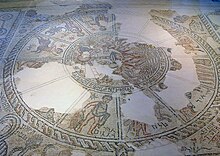
A Jewish tradition ofilluminated manuscriptsin at leastLate Antiquityhas left no survivors, but can be deduced from borrowings in Early Medieval Christian art. A number of luxury pieces ofgold glassfrom the later Roman period have Jewish motifs. SeveralHellenistic-style floormosaicshave also been excavated in synagogues from Late Antiquity in Israel and Palestine, especially of thesigns of the Zodiac,which was apparently acceptable in a low-status position on the floor. Some, such as that atNaaran,show evidence of a reaction against images of living creatures around 600 CE. The decoration ofsarcophagiand walls at the cave cemetery atBeit She'arimshows a mixture of Jewish and Hellenistic motifs. However, for a period of several centuries between about 700 and 1100 CE there are scarcely any survivals of identifiably Jewish art.
Middle AgeRabbinicalandKabbalisticliterature also contain textual and graphic art, most famously illuminated haggadahs such as theSarajevo Haggadah,and other manuscripts like theNuremberg Mahzor.Some of these were illustrated by Jewish artists and some by Christians; equally some Jewish artists and craftsmen in various media worked on Christian commissions.[99]Outside of Europe,Yemenite Jewish silversmithsdeveloped a distinctive style of finely wrought silver that is admired for its artistry. Johnson again summarizes this sudden change from a limited participation by Jews in visual art (as in many other arts) to a large movement by them into this branch of European cultural life:
Again, the arrival of the Jewish artist was a strange phenomenon. It is true that, over the centuries, there had been many animals (though few humans) depicted in Jewish art: lions onTorahcurtains, owls on Judaic coins, animals on theCapernaumcapitals, birds on the rim of the fountain-basis in the 5th centuryNarosynagogue inTunis;there were carved animals, too, on timber synagogues in eastern Europe – indeed the Jewishwood-carverwas the prototype of the modern Jewishplastic artist.A book of Yiddish folk-ornament,printed atVitebskin 1920, was similar to Chagall's ownbestiary.But the resistance of pious Jews to portraying the living human image was still strong at the beginning of the 20th century.[100]

There were few Jewishsecularartists in Europe prior to theEmancipationthat spread throughout Europe with the Napoleonic conquests. There were exceptions, andSalomon Adlerwas a prominent portrait painter in 18th-centuryMilan.The delay in participation in the visual arts parallels the lack of Jewish participation in European classical music until the nineteenth century, and which was progressively overcome with the rise ofModernismin the 20th century. There were many Jewish artists in the 19th century, but Jewish artistic activity boomed during the end of World War I. The Jewish artistic Renaissance has its roots in the 1901 Fifth Zionist Congress, which included an art exhibition featuring Jewish artists E.M. Lilien and Hermann Struck. The exhibition helped legitimize art as an expression of Jewish culture.[101]According to Nadine Nieszawer, "Until 1905, Jews were always plunged into their books but from the first Russian Revolution, they became emancipated, committed themselves in politics and became artists. A real Jewish cultural rebirth".[102]Individual Jews figured in the modern artistic movements of Europe— With the exception of those living in isolated Jewish communities, most Jews listed here as contributing to secular Jewish culture also participated in the cultures of the peoples they lived with and nations they lived in. In most cases, however, the work and lives of these people did not exist in two distinct cultural spheres but rather in one that incorporated elements of both.
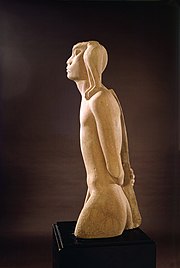
During the early 20th century, Jews figured particularly prominently in theÉcole de Pariscentered in theMontparnassemovement (includingChaim Soutine,Marc Chagall,Jules Pascin,Yitzhak Frenkel FrenelandMichel Kikoine),[103]and after World War II among theabstract expressionists:Alexander Bogen,Helen Frankenthaler,Adolph Gottlieb,Philip Guston,Al Held,Lee Krasner,Barnett Newman,Milton Resnick,Jack Tworkov,Mark Rothko,andLouis Schanker,as well as amongContemporary artists,ModernistsandPostmodernists.[104]ManyRussian Jewswere prominent in the art ofscenic design,particularly the aforementioned Chagall and Aronson, as well as the revolutionaryLéon Bakst,who like the other two also painted. OneMexican Jewishartist wasPedro Friedeberg;historians disagree as to whetherFrida Kahlo's father was Jewish or Lutheran. Among major artists Chagall may be the most specifically Jewish in his themes. But as art fades intographic design,Jewish names and themes become more prominent:Leonard Baskin,Al Hirschfeld,Peter Max,Ben Shahn,Art SpiegelmanandSaul Steinberg.
The collage artistWallace Berman's engagement with Hebrew reflected the Beat Generation's wider exploration of esoteric spiritual practices such as Zen, palm reading, astrology, kabbalah and psychedelic drugs. Born on Staten Island, Berman moved to Los Angeles[105]where the Hebrew letters on storefront windows and in Yiddish-language newspapers fascinated him. According to historian Richard Candida Smith, "Berman's interest in the Hebrew alphabet and its functions in Jewish mysticism was part of an effort to reclaim his ethnic identity."[106]In 1989, the painterR.B. Kitajpublished his "First Diasporist Manifesto", a short book in which he analysed how his art was based on his alienation as a Jew born in Cleveland, Ohio and living in London. In 2007, a second illustrated stream of consciousness book followed, "The Second Diasporist Manifesto."[107]
Jews have also played a very important role in media other than painting; their involvement in sculpture came rather later, perhaps due to lingering feelings against "graven images". But there were many notable Jewish sculptors in the later 19th and 20th centuries, includingMoses Jacob Ezekiel(American, d 1917), SirJacob Epstein(American-British, d 1959),Ossip Zadkine(French, d 1967)Naum Gabo(Russian, d 1977),Oscar Nemon(Croatian, d 1985),Louise Nevelson(American, d 1988),Herbert Ferber(American, d 1991).
In photography some notable figures areAndré Kertész,Robert Frank,Helmut Newton,Garry Winogrand,Cindy Sherman,Steve Lehman,[108]andAdi Nes;in installation art and street art some notable figures areSigalit Landau,[109]Dede,[110]andMichal Rovner.
| Camille Pissarro (1830–1903) |
Amedeo Modigliani (1884–1920) |
Diego Rivera (1886–1957) |
Alexander Bogen (1916–2010) |
Marc Chagall (1887–1985) |
Isaac Frenkel Frenel (1899–1981) |
Chaim Soutine (1893–1943) |
|---|---|---|---|---|---|---|
 |
 |
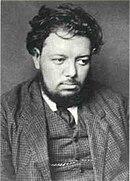 |
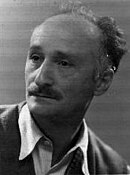 |
 |
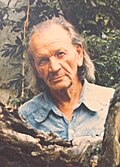
|

|
Comics, cartoons, and animation
[edit]Graphic art,as expressed in the art of comics, has been a key field for Jewish artists as well. In theGoldenandSilver agesof American comic books, the Jewish role was overwhelming and a large number of the medium's foremost creators have been Jewish.[111]
Max Gaineswas a pioneering figure in the creation of the modern comic book when in 1935 he published the first one calledFamous Funnies.[112]In 1939, he founded, withJack LiebowitzandHarry Donenfeld,All-American Publications(the AA Group).[113]The publication is known for the creation of several superheroes such as the originalAtom,Flash,Green Lantern,Hawkman,andWonder Woman.Donenfeld and Liebowitz were also the owners of National Allied Publications which distributedDetective ComicsandAction Comics.That company was also a precursor ofDC Comics.
In 1939, thepulp magazinepublisherMartin GoodmanformedTimely Publications,[114]a company to be known, since the 1960s, asMarvel Comics.At Marvel, Artists such asStan Lee,Jack Kirby,[115]Larry LieberandJoe Simoncreated a large variety of characters and cultural icons includingSpider-Man,Hulk,Captain America,Iron Man,Thor,Daredevil,and the teamsFantastic Four,Avengers,X-Men(including many of its characters) andS.H.I.E.L.D..Stan Lee attributed the Jewish role in comics to the Jewish culture.[116]
AtDC ComicsJewish role was significant as well; the character ofSuperman,which was created by the Jewish artistsJoe ShusterandJerry Siegel,[111]is partly based on the biblical figure ofSamson.[117]It was also suggested the Superman is partly influenced byMoses,[118][119]and other Jewish elements. More at DC Comics areBob Kane,Bill FingerandMartin Nodell,creators ofGreen Lantern,Batman[111]and many related characters asRobin,The Joker,Riddler,ScarecrowandCatwoman;Gil Kane,co-creator ofAtomandIron Fist. Many of those involved in the later ages of comics are also Jewish, such asJulius Schwartz,Joe Kubert,Jenette Kahn,Len Wein,Peter David,Neil Gaiman,Chris ClaremontandBrian Michael Bendis.There is also a large number of Jewish characters among comics superheroes such asMagneto,Quicksilver,Kitty Pryde,The Thing,Sasquatch,Sabra,Ragman,Legion,andMoon Knight,of whom were and are influenced by events in Jewish history and elements of Jewish life.[120]
In 1944, Max Gaines foundedEC Comics.[121]The company is known for specializing in horror fiction, crime fiction, satire, military fiction and science fiction from the 1940s through the mid-1950s, notably theTales from the Cryptseries,The Haunt of Fear,The Vault of Horror,Crime SuspenStoriesandShock SuspenStories.Jewish artists that are associated with the publisher includeAl Feldstein,Dave Berg,andJack Kamen.
Will Eisnerwas an American cartoonist and was known as one of the earliest cartoonists to work in the American comic book industry. He is the creator of theSpiritcomics series and thegraphic novelA Contract with God.[122]TheEisner Awardwas named in his honor, and is given to recognize achievements each year in the comics medium.
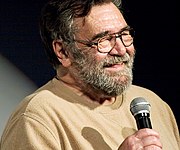
In 1952,William GainesandHarvey KurtzmanfoundedMad,an American humor magazine. It was widely imitated and influential, affectingsatiricalmedia as well as the cultural landscape of the 20th century, with editorAl Feldsteinincreasing readership to more than two million during its 1970s circulation peak.[123]Other known cartoonists areLee Falkcreator ofThe PhantomandMandrake the Magician;The Hebrew comics ofMichael Netzercreator ofUri-OnandUri Finkcreator ofZbeng!;William Steig,creator ofShrek!;Daniel Clowes,creator ofEightball;Art Spiegelmancreator of graphic novelMausandRaw(withFrançoise Mouly).
In animation, there were many Jewish animators:Genndy Tartakovskyis the creator of several animation TV series such asDexter's LaboratoryandSamurai Jack;[124]Matt Stoneco-creator ofSouth Park;David Hilbermanwho helped animateBambiandSnow White and the Seven Dwarfs;Friz Freleng,Looney Tunes;C. H. Greenblatt,Chowder;andHarvey Beaks;Ralph Bakshi,Fritz the Cat,Mighty Mouse: The New Adventures,Wizards,The Lord of the Rings,Heavy Traffic,Coonskin,Hey Good Lookin',Fire and Ice,andCool World;[125]Alex Hirsch,creator ofGravity Falls;Dave FleischerandLou Fleischer,founders ofFleischer Studios;Max Fleischer,animation ofBetty Boop,PopeyeandSuperman;Rebecca Sugar,creator ofSteven Universe.[126]Several companies producing animation were founded by Jews, such asDreamWorks,which its products includeShrek,Madagascar,Kung Fu PandaandThe Prince of Egypt;Warner Bros.,whoseanimation divisionis known for cartoons such asLooney Tunes,Tiny Toon Adventures,Animaniacs,Pinky and the BrainandFreakazoid!.
Cuisine
[edit]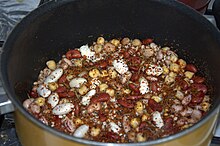
Jewish cooking combines the food of many cultures in which Jews have lived, includingMiddle Eastern,Mediterranean,Spanish,GermanandEastern Europeanstyles of cooking, all influenced by the need for food to bekosher.Thus, "Jewish" foods likebagels,[127]hummus,[128]stuffed cabbage,[129]andblintzesall come from various other cultures. The amalgam of these foods, plus uniquely Jewish contributions liketzimmis,[130]cholent,Malawach[131]andMatzah balls,[132]make up a variety ofJewish cuisine.
Philo-Semitism
[edit]Philo-Semitism(also spelledphilosemitism) orJudeophiliais an interest in, respect for and an appreciation, or in some cases afetishization,ofJewish people,their history,and their culture and the influence of Judaism, particularly on the part of agentile.[133]Within the Jewish community, philo-Semitism includes an interest in Jewish culture and a love of things that are considered Jewish.[134]
Very few Jews live inEast Asiancountries, but Jews are viewed in an especially positive light in some of them, partly owing to their shared wartime experiences during theSecond World War.Examples includeSouth Korea[135]andChina.[136]In general, Jews are positivelystereotypedas being intelligent, business savvy and committed to family values and responsibilities, but in theWestern world,the first of the two aforementioned stereotypes more frequently have the negatively interpreted equivalents of guile and greed. In South Korean primary schools, students are required to read theTalmud.[135]
See also
[edit]- Culture of Israel
- Visual arts in Israel
- Humanistic Judaism
- Jewish folklore
- Jewish studies
- Jews and Christmas
- Secular Culture & Ideas
- Traditional Jewish chronology
- Yiddishkeit
References
[edit]- ^Lawrence Schiffman,Understanding Second Temple and Rabbinic Judaism.KTAV Publishing House,2003. p. 3.
- ^Biale, David,Not in the Heavens: The Tradition of Jewish Secular Thought,Princeton University Press, 2011, pp.5–6, 15
- ^Torstrick, Rebecca L.,Culture and customs of Israel,Greenwood Press, 2004
- ^Măciucă, Constantin, preface toBercovici, Israil,O sută de ani de teatru evriesc în România( "One hundred years of Yiddish/Jewish theater in Romania" ), 2nd Romanian-language edition, revised and augmented by Constantin Măciucă. Editura Integral (an imprint of Editurile Universala), Bucharest (1998).ISBN973-98272-2-5.See thearticle on the authorfor further information.
- ^The Emergence of a Jewish Cultural IdentityArchived2005-10-28 at theWayback Machine,undated (2002 or later) on MyJewishLearning.com, reprinted from the National Foundation for Jewish Culture. Accessed 11 February 2006.
- ^"Meitar.org".meitar.org.il.Archived fromthe originalon May 10, 2006.RetrievedSeptember 18,2017.
- ^abMalkin, Y. "Humanistic and secular Judaisms."Modern Judaism An Oxford Guide,p. 107.
- ^"Medieval Philosophy and the Classical Tradition: In Islam, Judaism and Christianity" by John Inglis, Page 3
- ^"Introduction to Philosophy" by Dr Tom Kerns
- ^Moore, Edward (June 28, 2005)."Middle Platonism – Philo of Alexandria".The Internet Encyclopedia of Philosophy.ISSN2161-0002.RetrievedDecember 20,2012.
- ^Keener, Craig S (2003).The Gospel of John: A Commentary.Vol. 1. Peabody, Mass.: Hendrickson. pp. 343–347.
- ^Yalom, Irvin (February 21, 2012)."The Spinoza Problem".The Washington Post.Archived fromthe originalon November 12, 2013.
- ^"Mendelssohn".JewishEncyclopedia.com.RetrievedOctober 22,2012.
- ^Wein (1997), p. 44. (Google books)
- ^Daniel J. Elazar,Judaism and Democracy: The Reality.Undated. Jerusalem Center for Public Affairs. Accessed February 11, 2006.
- ^"A Jewish Fight for Public Education".September 2, 2013.RetrievedOctober 7,2014.
- ^"The Jewish Americans".PBS.RetrievedOctober 7,2014.
- ^Sowell, Thomas (2006).On classical economics.New Haven, CT:Yale University Press.
- ^"David Ricardo – Policonomics".www.policonomics.com.RetrievedSeptember 18,2017.
- ^The section on banking is drawn largely from the article"Usury"in thepublic domainJewish Encyclopedia(1901–1906).
- ^"Jewish Nobel Prize Laureates".jewishvirtuallibrary.org.RetrievedSeptember 18,2017.
- ^JINFO."Jewish Nobel Prize Winners in Physics".jinfo.org.
- ^JINFO."Jewish Nobel Prize Winners in Chemistry".www.jinfo.org.
- ^JINFO."Jewish Nobel Prize Winners in Medicine".jinfo.org.
- ^JINFO."Jewish Recipients of the ACM Turing Award".jinfo.org.
- ^"Jewish Recipients of the Fields Medal".jinfo.org.
- ^"Rosalind Franklin:: DNA from the Beginning".www.dnaftb.org.RetrievedSeptember 18,2017.
- ^"Rosalind Franklin: A Crucial Contribution".www.nature.com.RetrievedSeptember 18,2017.
- ^"Rosalind Franklin's contributions to the study of DNA".gmu.edu.Archived fromthe originalon September 6, 2006.RetrievedSeptember 18,2017.
- ^Kurtz, J. H.; Simonton, T. D. (1857)."The Bible and Astronomy; An Exposition of the Biblical Cosmology, and Its Relations to Natural Science".Philadelphia: Lindsay & Blakiston.
- ^Andrews, D.J., A.H. Kassam. 1976. The importance of multiple cropping in increasing world food supplies. pp. 1–10 in R.I. Papendick, A. Sanchez, G.B. Triplett (Eds.), Multiple Cropping. ASA Special Publication 27. American Society of Agronomy, Madison, Wisconsin.
- ^Risch, Stephen J.; Hansen, Michael K. (1982)."Plant Growth, Flowering Phenologies, and Yields of Corn, Beans and Squash Grown in Pure Stands and Mixtures in Costa Rica".Journal of Applied Ecology.19(3): 901–916.doi:10.2307/2403292.JSTOR2403292.
- ^"Science in Medieval Jewish Scholarship".myjewishlearning.com.Archived fromthe originalon April 3, 2015.RetrievedSeptember 18,2017.
- ^ab"Zacuto, Abraham" in Glick, T., S.J. Livesy and F. Williams, editors, (2005)Medieval science, technology, and medicine: an encyclopedia,New York Routledge.
- ^Livio, Mario (2006).The Equation that Couldn't Be Solved.Simon & Schuster.ISBN978-0743258210.
- ^Boaz Tsaban and David Garber."The proof of Rabbi Abraham Bar Hiya Hanasi".Archived fromthe originalon August 12, 2011.RetrievedMarch 28,2011.
- ^"Garcia de Orta (1501/02-68)".www.sciencemuseum.org.uk.Archived fromthe originalon September 19, 2017.RetrievedSeptember 18,2017.
- ^abWill, Clifford M (August 1, 2010)."Relativity".Grolier Multimedia Encyclopedia.Archived fromthe originalon January 24, 2013.RetrievedAugust 1,2010.
- ^abWill, Clifford M (August 1, 2010)."Space-Time Continuum".Grolier Multimedia Encyclopedia.Archived fromthe originalon January 25, 2013.RetrievedAugust 1,2010.
- ^abWill, Clifford M (August 1, 2010)."Fitzgerald–Lorentz contraction".Grolier Multimedia Encyclopedia.Archived fromthe originalon January 25, 2013.RetrievedAugust 1,2010.
- ^"Jews and the Atom Bomb".May 20, 2015. Archived from the original on May 20, 2015.RetrievedSeptember 18,2017.
{{cite web}}:CS1 maint: bot: original URL status unknown (link) - ^Ford & Urban 1965, p. 109
- ^Mannoni, Octave,Freud: The Theory of the Unconscious,London: NLB 1971, p. 49-51
- ^Mannoni, Octave,Freud: The Theory of the Unconscious,London: NLB 1971, pp. 146–47
- ^Maiman, T. H.(1960). "Stimulated optical radiation in ruby".Nature.187(4736): 493–494.Bibcode:1960Natur.187..493M.doi:10.1038/187493a0.S2CID4224209.
- ^Townes, Charles Hard."The first laser".University of Chicago.RetrievedMay 15,2008.
- ^Regis, Ed(November 8, 1992)."Johnny Jiggles the Planet".The New York Times.RetrievedFebruary 4,2008.
- ^Glimm,p. vii
- ^Einstein, Albert (May 1, 1935), "Professor Einstein Writes in Appreciation of a Fellow-Mathematician", New York Times (May 5, 1935), retrieved April 13, 2008. Online at the MacTutor History of Mathematics archive.
- ^Alexandrov 1981,p. 100.
- ^Ne'eman, Yuval (1999), "The Impact of Emmy Noether's Theorems on XXIst Century Physics", inTeicher, M.(ed.),The Heritage of Emmy Noether,Israel Mathematical Conference Proceedings,Bar-Ilan University,American Mathematical Society,Oxford University Press,pp. 83–101,ISBN978-0-19-851045-1,OCLC223099225
- ^"Literature, Jewish".RetrievedJuly 13,2015.
- ^"biblical literature".britannica.com.RetrievedSeptember 18,2017.
- ^"Leading Dutch writer Mulisch dies".Gulf Daily News.November 1, 2010. Archived fromthe originalon June 9, 2012.RetrievedNovember 1,2010.
- ^Kamin, Debra (May 20, 2014)."The Jewish legacy behindGame of Thrones".The Times of Israel.RetrievedMay 31,2015.
- ^Martin, George R. R.(April 3, 2013)."My hero: Maurice Druon by George RR Martin".The Guardian.RetrievedJune 24,2015.
- ^Milne, Ben (April 4, 2014)."Game of Thrones:The cult French novel that inspired George RR Martin ".BBC.RetrievedApril 6,2014.
- ^JINFO."Jewish Nobel Prize Winners in Literature".www.jinfo.org.
- ^Claussen, Geoffrey D. (April 2022).Modern Musar: Contested Virtues in Jewish Thought.U of Nebraska Press.ISBN978-0-8276-1887-9.
- ^Melamed, S.M., "The Yiddish Stage",New York Times,September 27, 1925 (X2).
- ^Berlin Metropolis: Jews and the New Culture, 1890–1918ArchivedNovember 5, 2005, at theWayback Machine,on the site of The Jewish Museum, New York. Accessed February 12, 2006.
- ^Johnson, Paul (1987).A History of the Jews,pg. 479. New York: Harper Perennial. – Erwin Piscator was aLutheran Protestant(Nazipropagandists had claimed since 1927 that he was a "Jewish Bolshevik", though).
- ^Suzanne Weiss,Jewish cabaret singer brings songs of Berlin to Berkeley,The Jewish News Weekly of Northern California,September 27, 1996. Accessed February 12, 2006.
- ^"Broadway Celebrates 100 Years of National Yiddish Theatre Tonight – Playbill".Playbill.August 5, 2015.RetrievedSeptember 18,2017.
- ^Stephen J. Whitfield,Musical Theater(PDF).Brandeis Review,Winter/Spring 2000. Accessed February 11, 2006.
- ^Samantha M. Shapiro,The Arts: A Jewish Street Called BroadwayArchivedDecember 6, 2008, at theWayback Machine.Hadassah Magazine,October 2004 Vol. 86 No.2. Accessed February 11, 2006.
- ^Charyn, Jerome."Early Broadway's un-Jewish Jews."Midstream50.1 (January 2004): 19(7).Expanded Academic ASAP.Thomson Gale. UC Irvine (CDL). March 9, 2006
- ^The Klezmer Company Breaks New Ground with Orchestral Klezmer Production "Jewish Broadway with Orchestra and Chorus" at FAUArchived2006-09-09 at theWayback Machine.Florida Atlantic University press release, February 8, 2005. Accessed 11 February 2006.
- ^Raphael Mostel,Carmen Comes HomeArchivedMay 17, 2006, at theWayback Machine,The Forward,May 7, 2004. Accessed February 12, 2006.
- ^Dr. Kenneth Libo Ph. D and Michael Skakun,The Persecution of Creativity: Jews, Music and ViennaArchivedSeptember 26, 2005, at theWayback Machine,Center for Jewish History, April 16, 2004. Accessed February 12, 2006
- ^Michael Billig,Creating the American MusicalArchivedSeptember 28, 2005, at theWayback Machine.Originally fromRock 'N' Roll Jews(Five Leaves Publications), extracted on myjewishlearning.com. Accessed February 12, 2006.
- ^Jacob Baron,Jewish ComposersArchivedDecember 28, 2004, at theWayback Machine,Machar, The Washington Congregation for Secular Humanistic Judaism,June 2, 2005. Accessed February 15, 2006.
- ^Alan Gomberg,op. cit.
- ^Arthur Laurents,Theater: West Side Story; The Growth of an Idea,New York Herald Tribune,August 4, 1957. Reproduced on leonardbernstein.com. Accessed February 12, 2006.
- ^JINFO."Jewish Recipients of the Pulitzer Prize for Drama".www.jinfo.org.
- ^Shimon Levy,The Development of Israeli Theatre– a brief overviewArchivedAugust 16, 2005, at theWayback Machine.Credited to Ministry of Foreign Affairs, Jerusalem, 2000. Accessed February 12, 2006.
- ^Jewishencyclopedia.com,Jewish Encyclopedia.Could not access February 12, 2006.
- ^Shimon Levy,op. cit.ArchivedAugust 16, 2005, at theWayback Machine
- ^Orna Ben-Meir,Biblical Thematics in Stage Design for the Hebrew TheatreArchivedApril 15, 2005, at theWayback Machine,Assaph,Section C, no. 11 (July 1999), p. 141et. seq..Accessed February 12, 2006.
- ^History of Israeli Theatre,on aGeocitiessite, creditshabima.org.ilArchivedNovember 24, 2005, at theWayback Machineandcameri.co.il.
- ^abcMusakhanova G. B. Judeo-Tat literature. Makhachkala: Dagestan Book Publishing House, 1993.
- ^P. Agarunov. Theatrical art of Mountain Jews. // Magazine "Minyan", №5.
- ^abcdBook (ru:«Самородки Дагестана») – "Gifted of Dagestan". Author: I. Mikhailova. Makhachkala, Russia. 2014.
- ^Hobsbawm, E. J. (2003),Interesting Times: A Twentieth-Century Life,Knopf Publishing Group, pp. 10–11,ISBN9780375422348
- ^Johnson,op. cit.' p. 462-463.
- ^Johnson,op. cit.p. 462-463.
- ^"JEWISH MUSIC INSTITUTE – Western Classical Music".www.jmi.org.uk.RetrievedSeptember 18,2017.
- ^Landa, M. J. (1926).The Jew in Drama,p. 17. New York: Ktav Publishing House (1969). EachJewish diasporiccommunity developed its own dance traditions for wedding celebrations and other distinguished events.
- ^Yiddish, Klezmer, Ashkenazic or 'shtetl' dancesArchivedAugust 12, 2011, at theWayback Machine,Le Site Genevois de la Musique Klezmer. Accessed February 12, 2006.
- ^Yiddish, Klezmer, Ashkenazic or 'shtetl' dances,Le Site Genevois de la Musique Klezmer. Accessed February 12, 2006.
- ^Tanny, Jarrod (2015)."The Anti-Gospel of Lenny, Larry and Sarah: Jewish Humor and the Desecration of Christendom".American Jewish History.99(2): 167–193.doi:10.1353/ajh.2015.0023.S2CID162195868.Archived fromthe originalon October 24, 2018.RetrievedJanuary 12,2021.
- ^Leo Rosten,The Joys of Yinglish
- ^Ismar Schorsch,Shabbat Shekalim Va-Yakhel 5755ArchivedOctober 26, 2005, at theWayback Machine,commentary onExodus35:1 – 38:20. February 25, 1995. Accessed February 12, 2006.
- ^Velvel Pasternak,Music and Art,part of "12 Paths" on Judaism.com. Accessed February 12, 2006.
- ^"Not a Pretty Picture".Haaretz.June 27, 2002.RetrievedSeptember 18,2017.
- ^Jessica Spitalnic Brockman,A Brief History of Jewish ArtArchivedJanuary 14, 2006, at theWayback Machineon MyJewishLearning.com. Accessed February 12, 2006.
- ^Michael Schirber,Did Christians copy Jewish catacombs?,NBC News, July 20, 2005. Accessed February 12, 2006.
- ^Jona Lendering,The Jewish diaspora: RomeArchivedApril 18, 2016, at theWayback Machine.Livius.org. Accessed February 12, 2006.
- ^Roza Bieliauskiene and Felix Tarm,Brief History of Jewish Art,Jewish Art Network. Accessed January 14, 2010.
- ^Johnson,op.cit.,p. 411.
- ^"GW Libraries at the George Washington University – GW Libraries".www.gwu.edu.Archived fromthe originalon June 19, 2010.RetrievedSeptember 18,2017.
- ^Rebecca Assoun,Jewish artists in MontparnasseArchivedSeptember 29, 2007, at theWayback Machine.European Jewish Press, July 19, 2005. Accessed February 12, 2006.
- ^"artnet Galleries: A House in Safed by Yitzhak Frenkel-Frenel from Jordan-Delhaise Gallery".December 3, 2013. Archived fromthe originalon December 3, 2013.RetrievedApril 14,2023.
- ^Jewish Artists,Jewish Virtual Library, 2005. Accessed February 12, 2006.
- ^Mark Bloch (2007)."Semina Culture: Wallace Berman and his Circle at the Grey Art Gallery, New York University".Whitehot Magazine.RetrievedOctober 18,2023.
- ^Candida Smith, Richard. (2023). "Utopia and Dissent," Ch 9 Wallace Berman on Public Culture in the Kennedy Years.
- ^Tom Teicholz (2003)."Kitaj the 'Diasporist'".Jewish Journal.RetrievedOctober 18,2023.
- ^foto8.com,John Levy, "Review of The Tibetans", photo 8,amazon.com,Lehman, Steve, The Tibetans: A Struggle to Survive (New York: How Town / Umbrage), 1998.
- ^See: Ohad Meromi in the online exhibition "Real Time" <http://www.imj.org.il/exhibitions/2008/realtime/Meromi_e.htmlArchivedApril 14, 2012, at theWayback Machine>.
- ^Boulos, Nick (October 5, 2013)."Show and Tel Aviv: Israel's artistic coastal city".The Independent.Archivedfrom the original on June 8, 2022.RetrievedApril 1,2014.
- ^abcBooker, M. Keith (2012).Encyclopedia of Comic Books and Graphic Novels.pp. 504–505.ISBN9780313357473.RetrievedMarch 30,2015.
- ^Markstein, Donald D."Don Markstein's Toonopedia: Famous Funnies".www.toonopedia.com.RetrievedSeptember 18,2017.
- ^"UAHC – Reform Judaism Magazine".reformjudaismmag.net.Archived fromthe originalon March 13, 2016.RetrievedSeptember 18,2017.
- ^Brod, Harry (2012).SUPERMAN IS JEWISH?: How Comic Book Superheroes Came to Serve Truth, Justice, and the Jewish-American Way.p. 66.ISBN9781416598459.RetrievedMarch 30,2015.
- ^Groth, Gary (May 23, 2012)."Jack Kirby Interview".The Comics Journal.RetrievedMarch 30,2015.
- ^Hoffman, Jordan (April 29, 2012)."A marvel in comics".The Times of Israel.RetrievedMarch 30,2015.
- ^Petrou, David Michael (1978). The Making of Superman the Movie, New York: Warner Books
- ^Jacobson, Howard (March 5, 2005). "Up, up and oy vey". The Times (UK). p. 5.
- ^The Mythology of Superman(DVD). Warner Bros. 2006.
- ^Baylen, Ashley (May 5, 2012)."Top 10 Jewish Marvel & DC Comics' Superheroes".Shalom Life. Archived fromthe originalon April 10, 2015.RetrievedMarch 30,2015.
- ^Markstein, Donald D."Don Markstein's Toonopedia: EC Comics".www.toonopedia.com.RetrievedSeptember 18,2017.
- ^Inc., Will Eisner Studios."A short biography - WillEisner.com".willeisner.com.RetrievedSeptember 18,2017.
{{cite web}}:|last=has generic name (help) - ^Winn, Marie (January 25, 1981)."What Became of Childhood Innocence?".The New York Times.RetrievedFebruary 2,2011.
- ^"The Way of the Samurai".The Jewish Journal.August 3, 2001. Archived fromthe originalon February 20, 2012.RetrievedMarch 24,2007.
- ^"filmography".ralphbakshi.com.Archived fromthe originalon March 7, 2015.RetrievedSeptember 18,2017.
- ^Screenshot (October 11, 2017)."The Secret Jewish History Of Steven Universe".The Forward.RetrievedMay 20,2021.
- ^Roden, Claudia (1996). "The Book of Jewish Food: An Odyssey from Samarkand to New York”.Excerpt,retrieved April 7, 2015, from My Jewish Learning
- ^Vered, Ronit (May 13, 2017)."Why are Israeli Jews obsessed with hummus?".Haaretz.
- ^Eileen M. Lavine (September–October 2011)."Stuffed Cabbage: A Comfort Food for All Ages".Moment Magazine.Archived fromthe originalon October 11, 2011.RetrievedOctober 3,2011.
- ^Zeldes, Leah A.(September 1, 2010)."Eat this!Tzimmes,A sweet start to the Jewish New Year ".Dining Chicago.Chicago's Restaurant & Entertainment Guide, Inc. Archived fromthe originalon December 30, 2010.RetrievedSeptember 1,2010.
- ^Marks, Gil.Encyclopedia of Jewish Food.Houghton Mifflin.
- ^Roman, Alison (April 2, 2014)."How to Master Matzo Ball Soup".Bon Appetit.
- ^"The Genealogy of Morals", Part I, Section 16, tr. Walter Kaufmann
- ^The Encyclopedia of Christianity,Volume 4 by Erwin Fahlbusch, Geoffrey William Bromiley
- ^abAlper, Tim. "Why South Koreans are in love with Judaism".The Jewish Chronicle.May 12, 2011. Retrieved February 8, 2014.
- ^Nagler-Cohen, Liron. "Chinese: 'Jews make money'".Ynetnews.April 23, 2012. Retrieved February 8, 2014.
Sources
[edit]- Alexandrov, Pavel S.(1981). "In Memory of Emmy Noether". In Brewer, James W; Smith, Martha K. (eds.).Emmy Noether: A Tribute to Her Life and Work.New York: Marcel Dekker. pp. 99–111.ISBN978-0-8247-1550-2.OCLC7837628.
Further reading
[edit]- Landa, M.J. (1926).The Jew in Drama.New York: Ktav Publishing House (1969).
- Stevens, Matthew.Jewish Film Directory: a guide to more than 1200 films of Jewish interest from 32 countries over 85 years.Trowbridge: Flicks Books, 1992ISBN0-9489117-2-7298p.
- Gabler, Neal.An Empire of Their Own: How the Jews Invented Hollywood.The Crown Publishing Group, 1988.ISBN0-385-26557-3.
- Veidlinger, Jeffrey.Jewish Public Culture in the Late Russian Empire.Bloomington: Indiana University Press, 2009.
External links
[edit]- The center for Jewish Art Collection
- The City Congregation for Humanistic Judaism
- Congress of Secular Jewish Organizations
- Global Directory of Jewish Museums
- News and reviews about Jewish literature and books
- Festival of Jewish Theater and IdeasArchivedJanuary 19, 2017, at theWayback Machine
- The Bezalel Narkiss Index of Jewish ArtArchivedMarch 26, 2015, at theWayback Machine
- Heeb – an online magazine about Jewish culture
- Gesher Galicia

